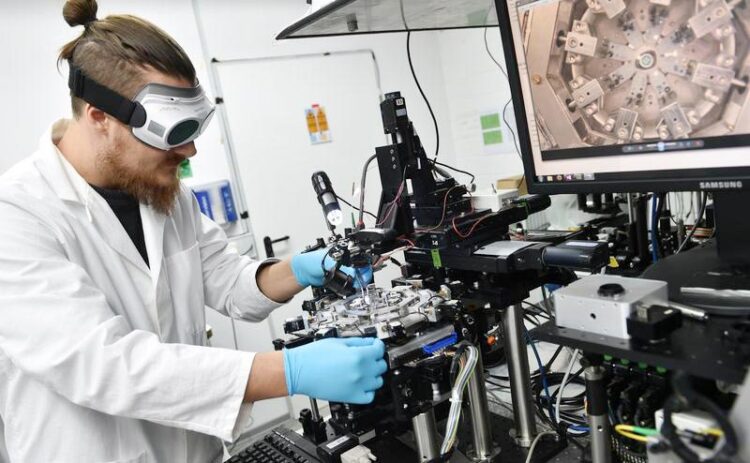Sharp vision with exchanged eye lens

Fragmentation of the lens with a laser should make it possible in the future to preserve its natural elasticity after "lens refilling".
Photo: LZH
LZH works on improved lens refilling.
In eye surgery for cataract, the lens refilling method could allow to maintain or restore the lens’s accommodation of the lens, i.e. the ability to adjust its refractive power flexibly. So far, however, this method has not yet been clinically successful. The Laser Zentrum Hannover e.V. (LZH) is now working within a new research project with ROWIAK GmbH to advance the method further.
In lens refilling, the interior of the lens is replaced with a gel, and the lens is “refilled”. Complications can arise in which the lens capsule becomes cloudy, or the capsular bag stiffens. Thus, after the operation, either the patient’s vision would be impaired, or the accommodation of the lens would be limited. In the “Lens-Refilling” project, LZH scientists and the LZH spin-off ROWIAK GmbH want to develop a new approach. The idea is to precisely remove only the nucleus of the eye lens and replace it with lens refilling. To this end, they are developing and evaluating a method with which they can technically implement lens nucleus fragmentation while fully preserving the physiological structures.
Preserving the cortex and thus accommodation
The lens cortex would remain untouched with this new method of nuclear fragmentation using femtosecond lasers. This would likely prevent the complications mentioned above. Thus, it would be possible to restore accommodative ability after lens refilling.
Enabling an alternative to artificial lenses
This method could be used for age-related lens opacities, such as cataracts, or to compensate for presbyopia. Currently, the damaged lens is usually removed and replaced with an artificial one. However, this artificial lens cannot accommodate itself, and the patient loses the ability to see sharply at any distance. The new method would help reduce the risk of postoperative cataracts. Patients should be able to go for a longer time without having to undergo another operation.
About “Lens-Refilling”
The project “Fragmentation of the eye lens nucleus using a femtosecond (fs) laser to restore accommodation by lens refilling” is supported by the NBank with funds from the European Regional Development Fund.
Media Contact
All latest news from the category: Medical Engineering
The development of medical equipment, products and technical procedures is characterized by high research and development costs in a variety of fields related to the study of human medicine.
innovations-report provides informative and stimulating reports and articles on topics ranging from imaging processes, cell and tissue techniques, optical techniques, implants, orthopedic aids, clinical and medical office equipment, dialysis systems and x-ray/radiation monitoring devices to endoscopy, ultrasound, surgical techniques, and dental materials.
Newest articles

Innovative 3D printed scaffolds offer new hope for bone healing
Researchers at the Institute for Bioengineering of Catalonia have developed novel 3D printed PLA-CaP scaffolds that promote blood vessel formation, ensuring better healing and regeneration of bone tissue. Bone is…

The surprising role of gut infection in Alzheimer’s disease
ASU- and Banner Alzheimer’s Institute-led study implicates link between a common virus and the disease, which travels from the gut to the brain and may be a target for antiviral…

Molecular gardening: New enzymes discovered for protein modification pruning
How deubiquitinases USP53 and USP54 cleave long polyubiquitin chains and how the former is linked to liver disease in children. Deubiquitinases (DUBs) are enzymes used by cells to trim protein…



